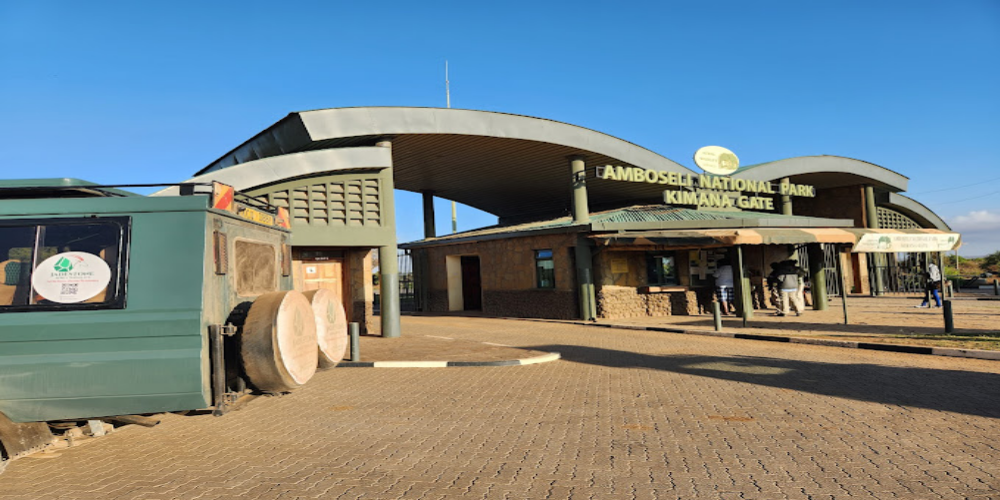
Day 1 Nairobi Arrival
Arrival at Nairobi’s Jomo Kenyatta Airport, met and greeted in our traditional style by our uniformed our representatives, transfer to the Wildebeest Camp Nairobi or similar.
Overnight at the Wildebeest Camp Nairobi or similar
Meal Plan: {Bed & Breakfast}
Days 2 & 3 Swara Plains Wildlife Conservancy
After breakfast, a Safari briefing is conducted by an African Spice Safari Director. By 8.30 a.m. we leave Nairobi for Swara Plains Acacia Cottages located on the Athi-Kapiti Plains Just outside Nairobi Town. Both Mount Kenya, 100 miles to the north, and Mount Kilimanjaro, equidistant to the south, are visible from the private wildlife conservancy ranch. called the Swara Plains Wildlife Conservancy. Swara Plains Wildlife Conservancy is situated on the Kapati Plains, 35 km southwest of the capital, Nairobi, just off the main Nairobi-to-Mombasa highway. The Small World Country Club on the southern side of the road marks the entrance way to Swara.
Swara Plains Wildlife Conservancy 20,000 acres ranch is old wild Africa at its very best with wide open savanna grasslands, tall yellow fever trees, endless views, over 3000 resident population of easy to see plains game and more than 270 birds species. Swara Plains Wildlife Conservancy is part of the Tsavo/Amboseli eco-system and with exception of Elephant’s, Rhino’s and Buffalo’s, all the other wild game found both in Tsavo and Amboseli are found here.
You will see big herds of Oryx, Elands, wildebeests, giraffes, monkeys, hartebeests, zebras, impalas, Grant’s and Thompson’s gazelles, warthogs and the and occasional gerenuk (Giraffe Gazelle) in total absence of mass tourism.
At Swara Plains Wildlife Conservancy, environment conservation is a top priority e.g. numerous dams have been dug to trap the scarce rainwater. Swara Plains Wildlife Conservancy has well-maintained earth roads for game drives and nature walks.
Not surprisingly the ranch and the camp have long been used for wildlife research. Students spend their days on guided game viewing Safaris, Bird walking Safaris, and Nature Walks in the Bush.
Overnight at the Swara Plains Acacia Camp
Meal Plan: {Breakfast, Lunch & Dinner}
Days 4, 5 & 6 Amboseli National Park
After Breakfast this morning our Students Safari departs for Amboseli national Park. We drive south to Amboseli national park at the foot of Mount Kilimanjaro. Amboseli National Park has stunning views of Mount Kilimanjaro, Africa’s highest peak and the highest free-standing mountain in the world. Should you be interested in bird watching, Amboseli National Park has over 425 species of birds that have been recorded. There are different types of birds e.g. water birds, birds of prey, open savannah birds as well as dry scrub land birds. While on our student safari, you are guaranteed to see countless herds of elephants ambling by. Nowhere else in Africa (or the world) will you get soooooo close to soooooo many free-ranging elephants. You should also be on the lookout for hippos, buffaloes, cheetahs, giraffes, zebras and gazelles, vervet monkeys and with some luck, some incredibly focused lionesses on the hunting trail…
Overnight at Amboseli Public campsite
Meal Plan: {Breakfast, Lunch & Dinner}
Day 7 Lake Naivasha Rift Valley
Our destination today is the Great Rift Valley. After Breakfast our Student Safari departs Amboseli National Park to Lake Naivasha. En route we will stop for lunch at Swara Plains Acacia Camp. Thereafter proceed to Lake Naivasha with a stop at the Naivasha market. Students new home/accommodations for the next three nights will be at Elsamere the home of the late conservationist Joy Adamson’s. Elsamere Conservation Center is a bird watcher’s paradise, over 200 species of birds have been recorded and rare species such as the Verraux’s Eagle Owl are regularly sighted.
Early mornings at Elsamere Conservation Center are as special time: the African Fish Eagles herald the dawn with their memorable ringing cry and the chorus of the bird song continues through-out the day.
Other activities at Elsamere include morning boat rides which are an ideal time to spot the many species of waterfowl and brilliantly colored kingfishers.
The lake is home to the largest waterfowl population in Kenya. Elsamere Conservation Centre has also become famous for its resident troop of black and white colobus monkeys, which visit the centre regularly. African Spice Safaris student guests may easily view the troop from the lakeside lawn. Other frequent visitors to the centre are pod of hippopotami, which often graze on the lawn at night. Lake Naivasha is very important ecologically. The Elsamere Conservation Center provides information on the lake ecology and regularly hosts researchers who monitor the lake and local wildlife.
Overnight at the Lake Naivasha Elsamere Conservation Centre
Meal Plan: {Breakfast, Lunch & Dinner}
Day 8 Day Trip to Hells ‘Gate National Park
Today we enjoy breakfast as we watch the sunrise over the Lake Naivasha. An early morning here should not be missed by anyone with an eye for birds since Lake Naivasha boasts of a wide variety of water and woodland birds. After breakfast we depart by road to Hell’s Gate National Park. Hell’s Gate is a unique Park where walking is allowed in the amidst wildlife. Famous for its natural hot geysers, eagle and vulture breeding grounds, students have the choice of driving, walking, cycling and rock climbing within the park. Horseback safaris can also be arranged for those who wish to ride.
Special locations to view include Fischer’s Tower, formerly a volcano’s plug, the Central Tower and Njorowa Gorges. Two extinct volcanos: Olkaria and Hobley’s are worth a trip. Natural steam vents rise from fissures in the volcanic rock. Obsidian, a striking black glassy rock formed from cooled molten lava is a feature of this landscape. Game to view includes: buffalo, Masai Giraffe, eland, Coke’s Hartebeest, lion, leopard and some cheetah.
A haven for ornithologists and rock climbers, the cliffs of Hell’s Gate are breeding grounds for vultures, Verreaux’s Eagles, augur buzzard and thousands of swifts; 103 species of bird have been recorded in the park. We climb back to the rangers post for transfer back to Elsamere educational center.
Overnight at the Lake Naivasha Elsamere Conservation Centre
Meal Plan: {Breakfast, Lunch & Dinner}
Day 9 Day Tour to Lake Naivasha Crater Lake Game Sanctuary
An early rising will ensure that one gets another magical display of the various birds. After breakfast we do a transfer by road to the nearby Crater Lake Game Sanctuary. Crater Lake Game Sanctuary is great fun to explore on foot with a local guide. This area is alive with hundreds of species of birds and many mammals, large and small. While walking through the conservancy you can spot gazelle, giraffe, zebra, eland, baboon and black and white colobus monkeys – just to name a few. You can also take the short walk to the rim of the beautiful volcanic crater with views down to the emerald-green lake in the crater. Depending on the water levels of other Rift Valley lakes, there are sometimes large populations of flamingoes on the lake.
Overnight at the Lake Naivasha Elsamere Conservation Centre
Meal Plan: {Breakfast, Lunch & Dinner}
Day 10 Drive back to Nairobi & Lunch at Kiambethu Tea Farm
Leave Naivasha in the late morning for lunch at the Kiambethu Tea Farm. Situated at 7200ft in a truly magnificent garden with views of the spectacular Mount Kilimanjaro and the Ngong hills, Kiambethu is a farmhouse to four generations of the first family to plant and make tea in Kenya. Students are served with a pre-lunch drink as the process of making tea is formally explained followed by an opportunity to tea fields. After a sumptuous lunch, a walk in the virgin forest to see Colobus monkeys and to learn about the flora and fauna follows. A cup of tea/coffee is served upon return at the house. Transfer to Nairobi for the evening flight out.
Meal Plan: {Breakfast & Lunch}
